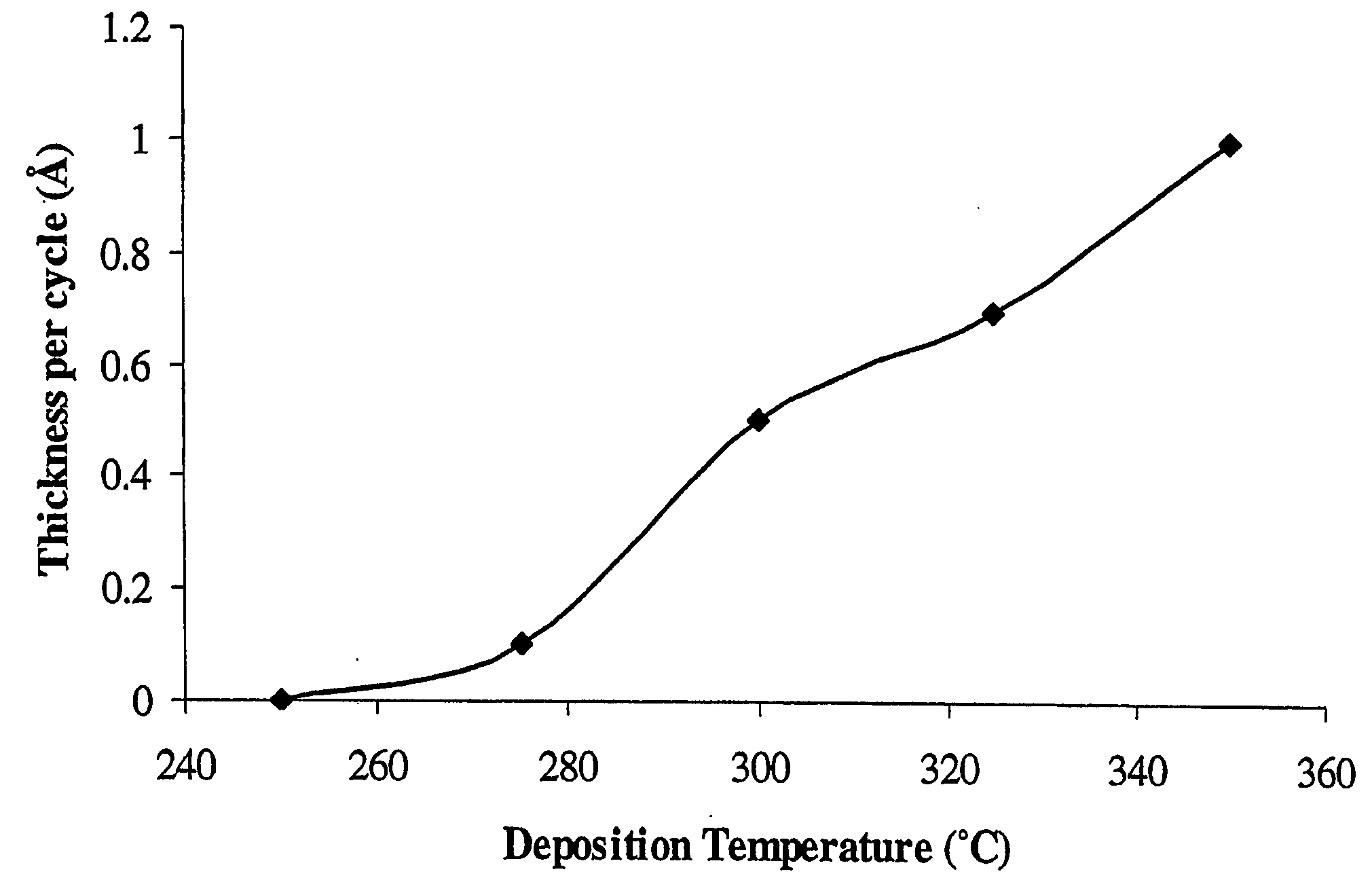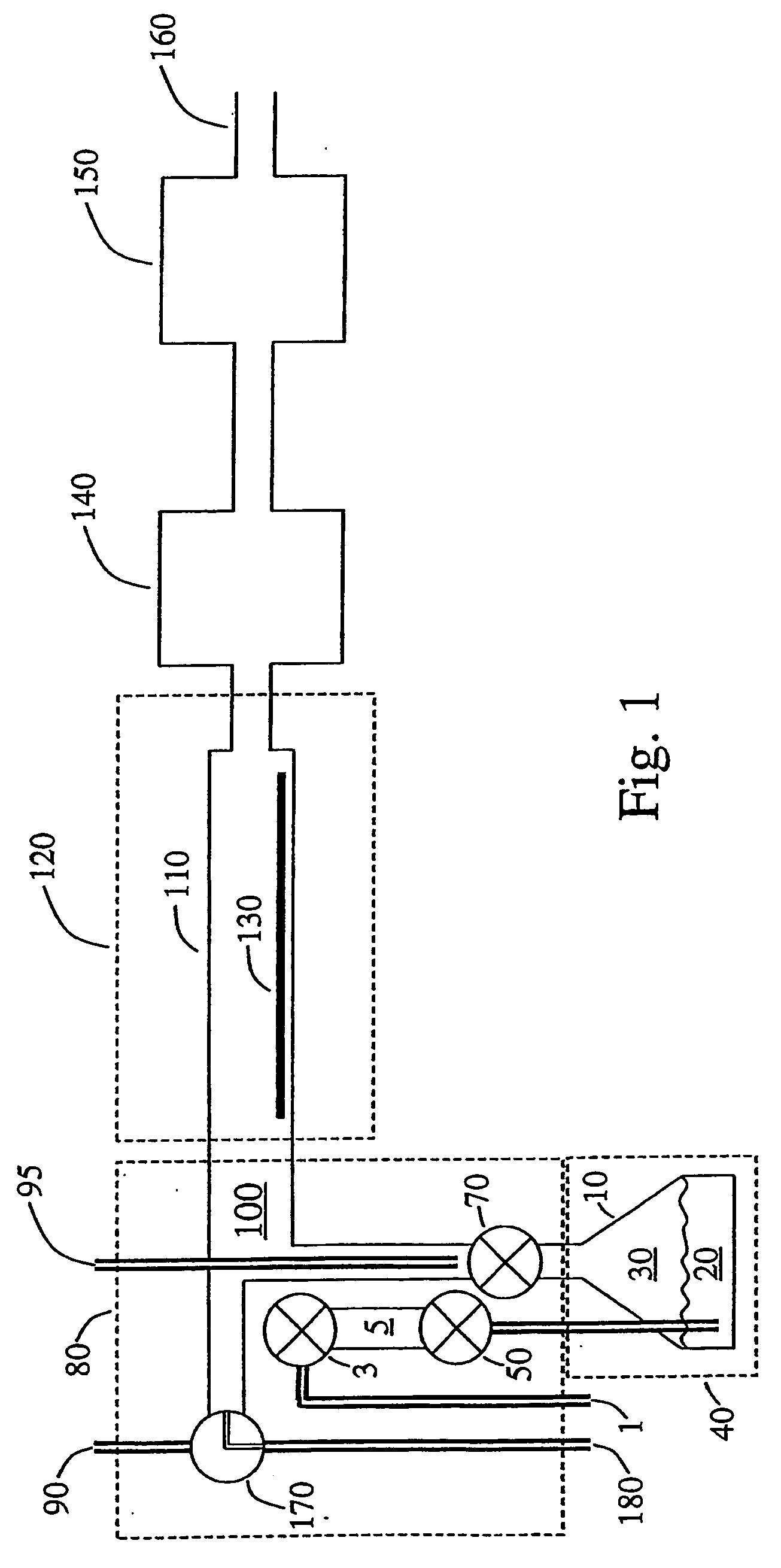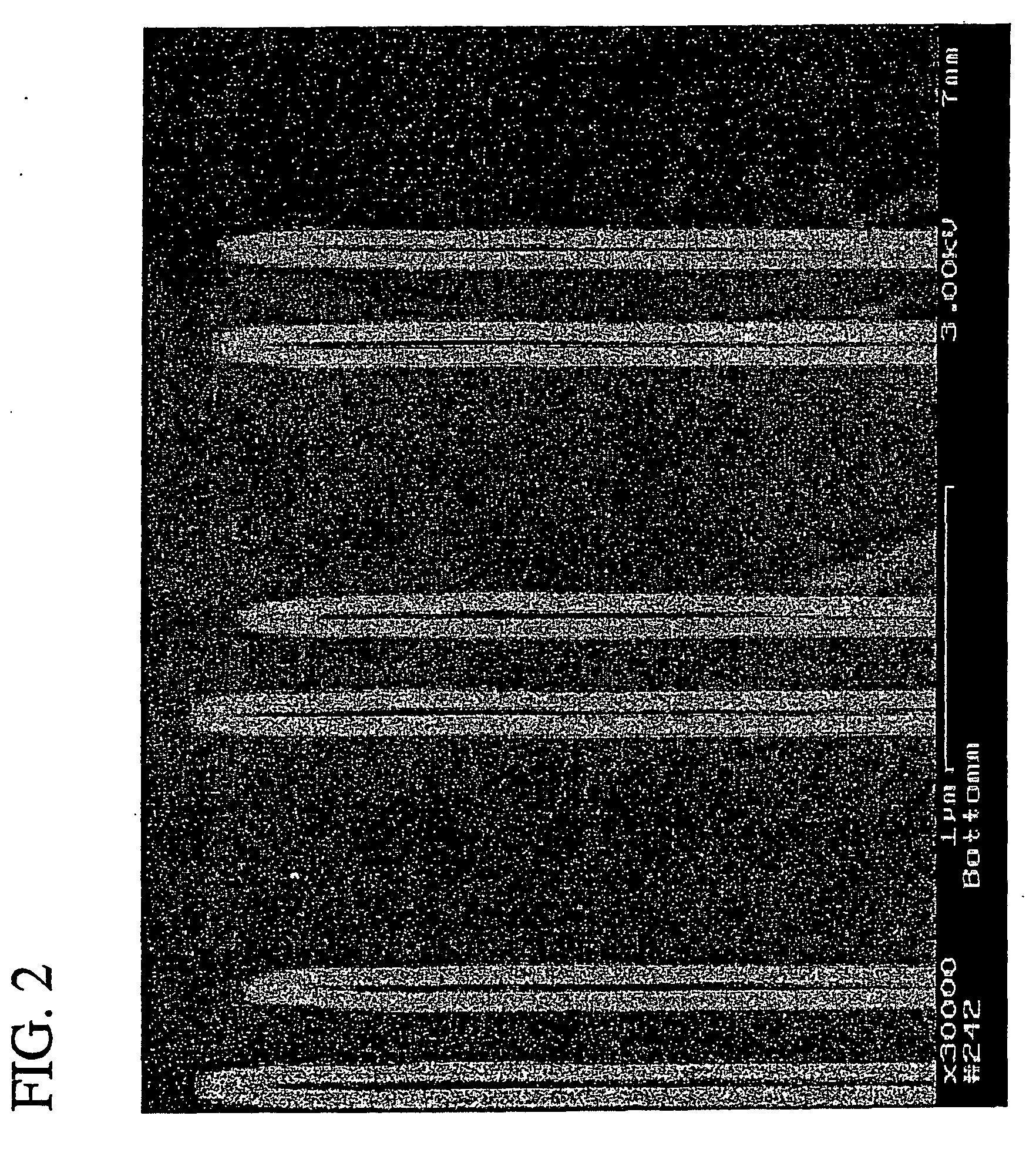Vapor deposition of tungsten nitride
a technology of tungsten nitride and vapor deposition, which is applied in the direction of organic compounds without c-metal linkages, instruments, and semiconductor/solid-state device details without c-metal links, etc. it can solve the problems of wf/sub>6/sub>, self-limiting ald reactions, and insufficient uniform thickness of film inside narrow features, etc., to achieve uniform thickness and smooth surfaces. , the effect of high efficiency
- Summary
- Abstract
- Description
- Claims
- Application Information
AI Technical Summary
Benefits of technology
Problems solved by technology
Method used
Image
Examples
example 1
Synthesis of bis(tert-butylimido)bis(dimethylamido) tungsten(VI), (t-BuN)2(Me2N)2W
[0044] 1) To a purple suspension of WCl6 (30.0 g, 75.6 mmol) in toluene (300 mL) a solution of HN(t-Bu)SiMe3 (50 g, 344 mmol) in toluene (65 mL) was added dropwise over a period of 2 h. The suspension was stirred for a total of 24 h. The dark green suspension was filtered through Celite to remove the solid (t-Bu)(Me3Si)NH2Cl and any unreacted WCl6. The dark brown filtrate was dried under vacuum in a warm water bath. 50 mL of hexane was added to the resulting dark brown solid and stirred in order to dissolve some impurities. The brown suspension was cooled in the freezer for overnight, and then the dark brown supernatant solution containing the impurities was decanted. NMR for [(t-BuN)2WCl2 NH2(t-Bu)]2
[0045]1H NMR (CDCl3): δ 4.3 (br, 4, H2NMe3), 1.45(s, 18, μ-NCMe3), 1.40(s, 18, NCMe3), 1.33(s, 18, H2NCMe3). (Reference for this first reaction: A. J. Nielson, Polyhedron, volume 6, page 1657, 1987)
[004...
example 2
Synthesis of bis(tert-butylimido)bis(ethylmethylamido)tungsten(VI)
[0048] To synthesize bis(tert-butylimido)bis(ethylmethylamido)tungsten(VI), (t-BuN)2(EtMeN)2W, the LiNMe2 is replaced with LiNEtMe. The product is a pale yellow liquid (17.1 g, yield: 50%)(bp 79-81° C. at 20 mTorr). 1H NMR (C6D6): δ 3.70 (q, 4, 3J=7.0 Hz, N(CH2CH3)Me), 3.50 (s, 12, NEtMe), 1.40 (s, 18, NCMe3), 1.18 (t, 6, 3J=7.0 Hz, N(CH2CH3)Me). 13C{1H} NMR (C6D6): 66.2 (2, NCMe3), 59.7 (2, N(CH2CH3)Me), 50.1 (2, NEtMe), 34.0 (6, NCMe3), 16.3 (2, N(CH2CH3)Me). Elemental composition for C14H34N4W, found (calculated): 37.74 (38.01)% C, 7.90 (7.75)% H, 12.51 (12.67)% N, (41.57)% W.
example 3
ALD of Tungsten Nitride
[0049] The apparatus of FIG. 1 was used to deposit tungsten nitride coatings. Bis(tert-butylimido)bis(dimethylamido)tungsten (VI) was placed in a stainless steel container 10 having vapor volume of 0.6 liter and heated to 30° C., at which temperature the tungsten precursor has a vapor pressure of about 6 milliTorr. Ammonia was held in a compressed gas cylinder at 20° C., and passed through a pressure regulator so that its pressure was reduced to 2.4 atmospheres. A silicon substrate 130 was prepared by dissolving its native oxide by placing it in dilute hydrofluoric acid solution for a few seconds. Next the substrate was irradiated by ultraviolet light (e.g. UV mercury lamp) in air until the surface became hydrophilic (about 3 minutes). Then the substrate 130 was placed on a half-round substrate holder 25 cm long in chamber 110 having diameter 2.4 cm and heated over a length 30 cm to a temperature of 300° C. Another silicon substrate with narrow holes (0.1 mic...
PUM
| Property | Measurement | Unit |
|---|---|---|
| Temperature | aaaaa | aaaaa |
| Temperature | aaaaa | aaaaa |
| Temperature | aaaaa | aaaaa |
Abstract
Description
Claims
Application Information
 Login to View More
Login to View More - R&D
- Intellectual Property
- Life Sciences
- Materials
- Tech Scout
- Unparalleled Data Quality
- Higher Quality Content
- 60% Fewer Hallucinations
Browse by: Latest US Patents, China's latest patents, Technical Efficacy Thesaurus, Application Domain, Technology Topic, Popular Technical Reports.
© 2025 PatSnap. All rights reserved.Legal|Privacy policy|Modern Slavery Act Transparency Statement|Sitemap|About US| Contact US: help@patsnap.com



